Potrebujeme váš súhlas na využitie jednotlivých dát, aby sa vám okrem iného mohli ukazovať informácie týkajúce sa vašich záujmov. Súhlas udelíte kliknutím na tlačidlo „OK“.
ASTM C1326-13
Standard Test Method for Knoop Indentation Hardness of Advanced Ceramics
Automaticky preložený názov:
Štandardná skúšobná metóda pre Knoop odsadenie Tvrdosť pokročilých keramiky
NORMA vydaná dňa 1.8.2013
Informácie o norme:
Označenie normy: ASTM C1326-13
Poznámka: NEPLATNÁ
Dátum vydania normy: 1.8.2013
Kód tovaru: NS-10704
Počet strán: 10
Približná hmotnosť: 30 g (0.07 libier)
Krajina: Americká technická norma
Kategória: Technické normy ASTM
Kategórie - podobné normy:
Anotácia textu normy ASTM C1326-13 :
Keywords:
advanced ceramics, indentation, Knoop hardness, microscope, ICS Number Code 81.060.30 (Advanced ceramics)
Doplňujúce informácie
| Significance and Use | ||||||||||||||||
|
5.1 For advanced ceramics, Knoop indenters are used to create indentations. The surface projection of the long diagonal is measured with optical microscopes. 5.2 The Knoop indentation hardness is one of many properties that is used to characterize advanced ceramics. Attempts have been made to relate Knoop indentation hardness to other hardness scales, but no generally accepted methods are available. Such conversions are limited in scope and should be used with caution, except for special cases where a reliable basis for the conversion has been obtained by comparison tests. 5.3 For advanced ceramics, the Knoop indentation is often preferred to the Vickers indentation since the Knoop long diagonal length is 2.8 times longer than the Vickers diagonal for the same force, and cracking is much less of a problem 5.4 The Knoop indentation is shallower than Vickers indentations made at the same force. Knoop indents may be useful in evaluating coating hardnesses. 5.5 Knoop hardness is calculated from the ratio of the applied force divided by the projected indentation area on the specimen surface. It is assumed that the elastic springback of the narrow diagonal is negligible. (Vickers indenters are also used to measure hardness, but Vickers hardness is calculated from the ratio of applied force to the area of contact of the four faces of the undeformed indenter.) 5.6 A full hardness characterization includes measurements over a broad range of indentation forces. Knoop hardness of ceramics usually decreases with increasing indentation size or indentation force such as that shown in 1.1 This test method covers the determination of the Knoop indentation hardness of advanced ceramics. In this test, a pointed, rhombic base, pyramidal diamond indenter of prescribed shape is pressed into the surface of a ceramic with a predetermined force to produce a relatively small, permanent indentation. The surface projection of the long diagonal of the permanent indentation is measured using a light microscope. The length of the long diagonal and the applied force are used to calculate the Knoop hardness which represents the material’s resistance to penetration by the Knoop indenter. 1.2 The values stated in SI units are to be regarded as standard. No other units of measurement are included in this standard. 1.3 Units—When Knoop and Vickers hardness tests were developed, the force levels were specified in units of grams-force (gf) and kilograms-force (kgf). This standard specifies the units of force and length in the International System of Units (SI); that is, force in newtons (N) and length in mm or μm. However, because of the historical precedent and continued common usage, force values in gf and kgf units are occasionally provided for information. This test method specifies that Knoop hardness be reported either in units of GPa or as a dimensionless Knoop hardness number. 1.4 This standard does not purport to address all of the safety concerns, if any, associated with its use. It is the responsibility of the user of this standard to establish appropriate safety and health practices and determine the applicability of regulatory limitations prior to use. |
||||||||||||||||
| 2. Referenced Documents | ||||||||||||||||
|
Podobné normy:
Historická
1.12.2010
Historická
15.7.2010
Historická
1.1.2010
Historická
1.8.2008
Historická
1.8.2012
Historická
1.2.2013


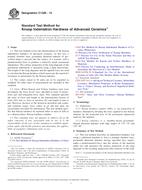
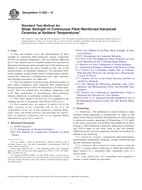 ASTM C1292-10
ASTM C1292-10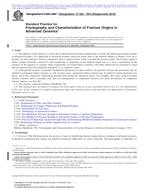 ASTM C1322-05b(2010)..
ASTM C1322-05b(2010)..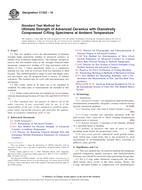 ASTM C1323-10
ASTM C1323-10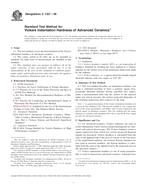 ASTM C1327-08
ASTM C1327-08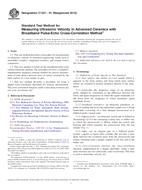 ASTM C1331-01(2012)..
ASTM C1331-01(2012).. ASTM C1332-01(2013)..
ASTM C1332-01(2013)..
 Cookies
Cookies
